Would you immediately dismiss someone with ideas about re-imagining motorcycles, if they were an educator with no formal motorcycle design or engineering credentials, and if they started riffing on ideas including golf cart parts and Nissan Leaf batteries? I think most of us would be suspicious, but then again, sometimes it takes an outsider to re-imagine an industry. And maybe the motorcycle industry could learn something from a New Orleans grease monkey named Matt Candler.
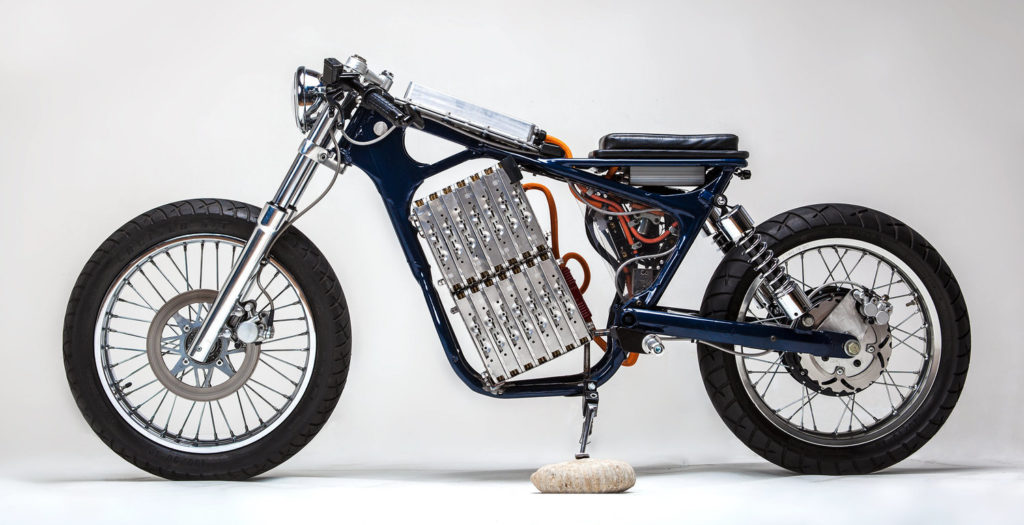
Matt, why and when did you start tinkering with motorcycles and batteries?
I moved to New Orleans in 2006 after a few years of garage-less living in big cities. Our new place had a too-small-for-working-on-cars garage, and as soon as I cleared it out, I started looking for projects that would help me justify buying new tools to my wife. I’d been commuting on two wheels for a while—a heavily modified 4-stroke scooter in San Francisco and an electric GoPed in New York City—so it wasn’t long until I dropped $40 on a copy of John Bidwell’s guide to converting a Honda Rebel to electric, called ‘El Chopper ET.’
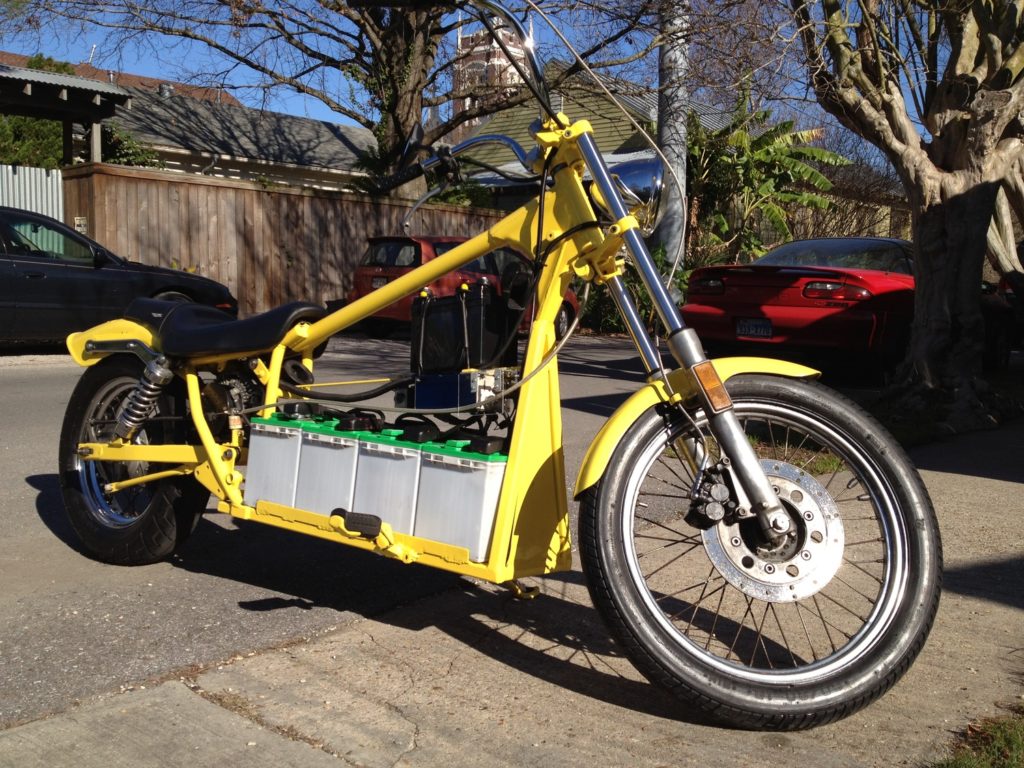
For someone who’s not an engineer you’ve certainly garnered a lot of press. What is your day job, and how do you approach a build?
I finished college with math and Spanish language majors, but I spent more time in the darkroom trying to become a photographer and in the metal studio dreaming of being a sculptor. I think that’s one reason I’ve found this whole process about way more than horsepower and specs. It’s really about learning for me, despite not having a credential or formal training. How can I figure something out without a degree? Where are the informal networks that can replace the formal classroom stuff I missed out on?
I build with two things in mind:
- Looking for new lines: What frame could be really interesting without they constraints of an ICE drivetrain? What’s something we haven’t thought of?
- Learning from other people: What do I suck at that might get better if I try X, and who can I find who knows how to do it better than me? Where can I go to explore what learning for learning’s sake really looks like?
Looking for new lines
My first build took more than a year, and I wanted to see results faster, so my second build was much simpler, a mod more than a ground-up build. The factory Zero I bought kept begging for some mods, so I put a café spin on it. I thought that Zero looked much better when I tore all the plastic off.
Stripping off the bodywork and looking for new design lines is really interesting to me. And it is what I obsessed about in my last build, based on a Suzuki Savage 650 frame and 14 battery modules from a Nissan Leaf car.
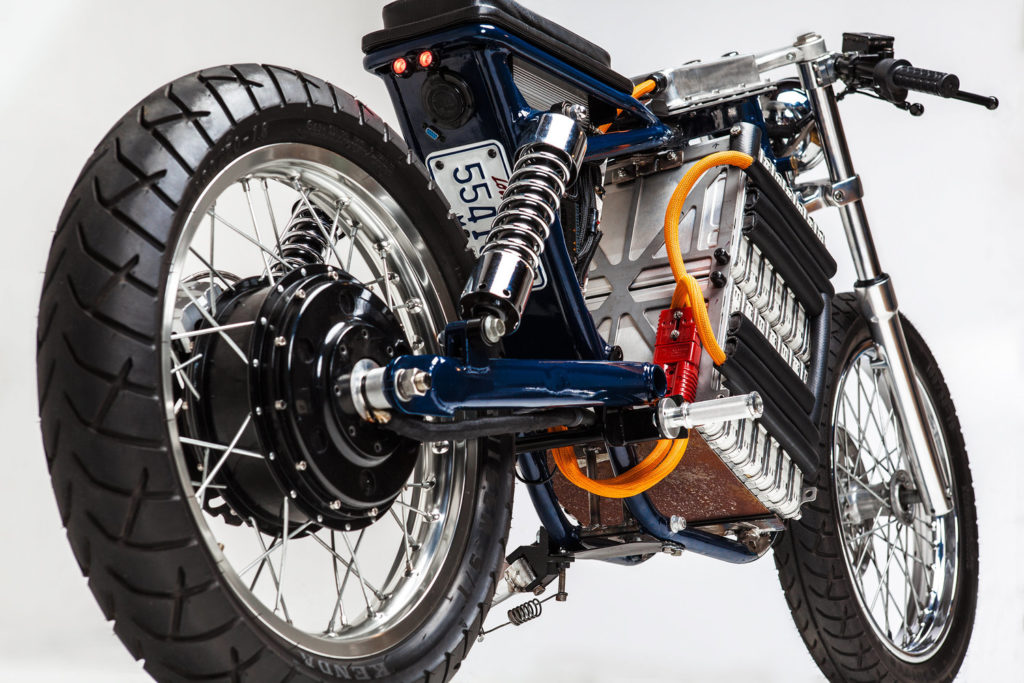
Learning from other people
One of the reasons I’m so interested in people like John sharing what they’ve learned is because I work in education during the day. I work at an organization called 4.0, where we help people run small experiments that might make learning more effective, engaging and fun, especially for kids who don’t have great school options today.
That’s why I get so fired up when I find a community that’s together solely for the love of creating and sharing and learning. From elmoto.net, an online community of electric builders, to Makers of NO and the New Orleans Mini Maker Fair, I’ve found places I can go when I’m clueless or when I’ve figured something out that I want to share.
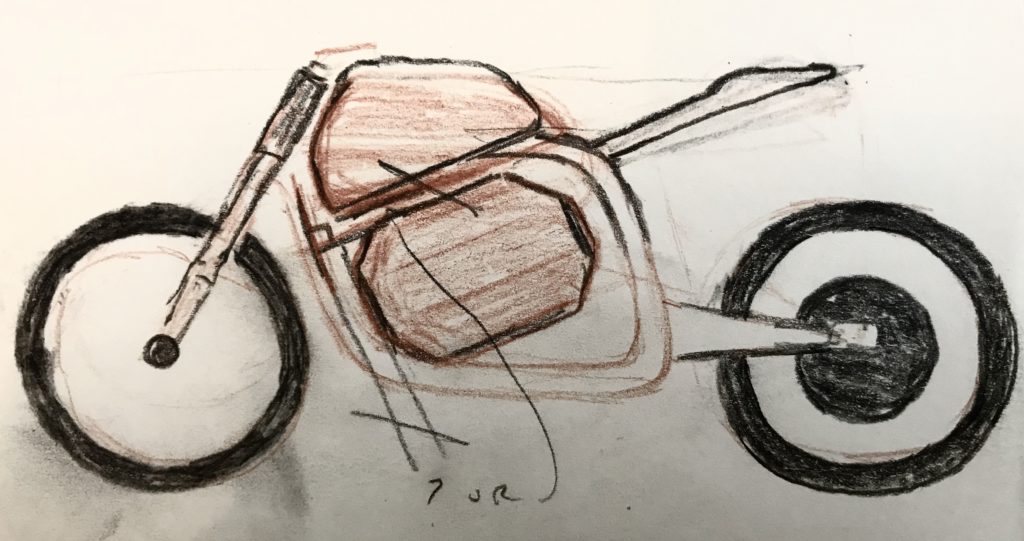
You’re talking my language with a 1973 BMW R75/5 build. How’s that coming along, and what are your plans?
Thanks. The airheads are gorgeous bikes. When I took the Leafy Savage to the Handbuilt Show two years ago, I got to spend time with some builders I really respect, including Bryan Heidt, who builds bikes at Fuller Moto in my hometown of Atlanta, GA. He pushed me on my build, and dared me to try and make an electric on a really classic frame. I took him up on it and got a prototype built last winter with the help of two amazing interns who were as curious as I was about learning new stuff, Liam Grace Flood and Nadav Hendel. We documented that journey here.
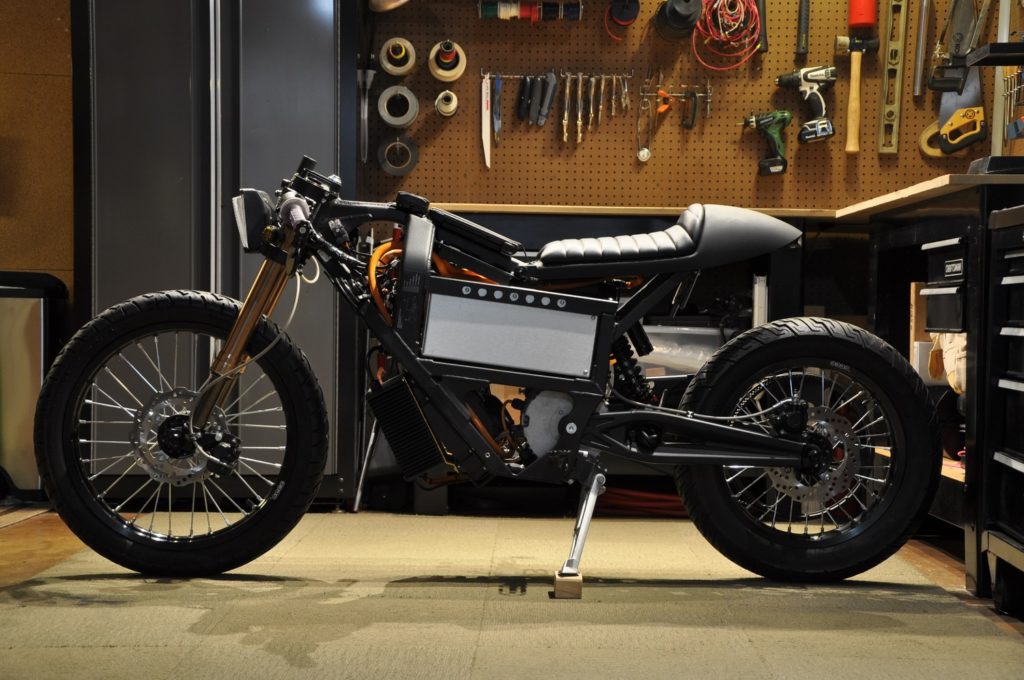
I’d love to get feedback on where to take this!
Any plans to partner with an OEM to develop a production-friendly model?
Nope. I’m lucky to have a day job I love. I love seeing OEMs experiment with custom builders, and I’d be thrilled to riff with anyone thinking about electric bike design, but I’m happy as a dude in a garage right now. I care more about encouraging people to get off their couch and try something new than getting lots of bikes to market. I respect the people who take on that challenge, but that’s not my goal right now.
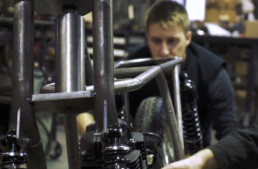
I notice one thing about your creations, they have a lot open space in their frames. I believe you leave the frames pretty much in stock form. A modified frame to accommodate square or rectangular batteries in the lower section and a fuel tank shaped “saddlebag” in the same upper location of the stock gas model would make it more pleasing to the eye.
Also, batteries and frame could be matching colors to homogenize the overall look.
Bikers still have a preconceived image of what a bike should look like. Putting cooling fins, not too large, on the battery cases would mimic the air cooled look of a Gasser.
I like your way of thinking with this concept.
Yes!!! This was my first motorcycle in the late eighties & used it for messenger work in the L.A. area – glad to see its evolvement into a 21st century viable vehicle – kudos
I did swap out the handlebars for the Harley drag bar style, instead of the factory pullbacks.